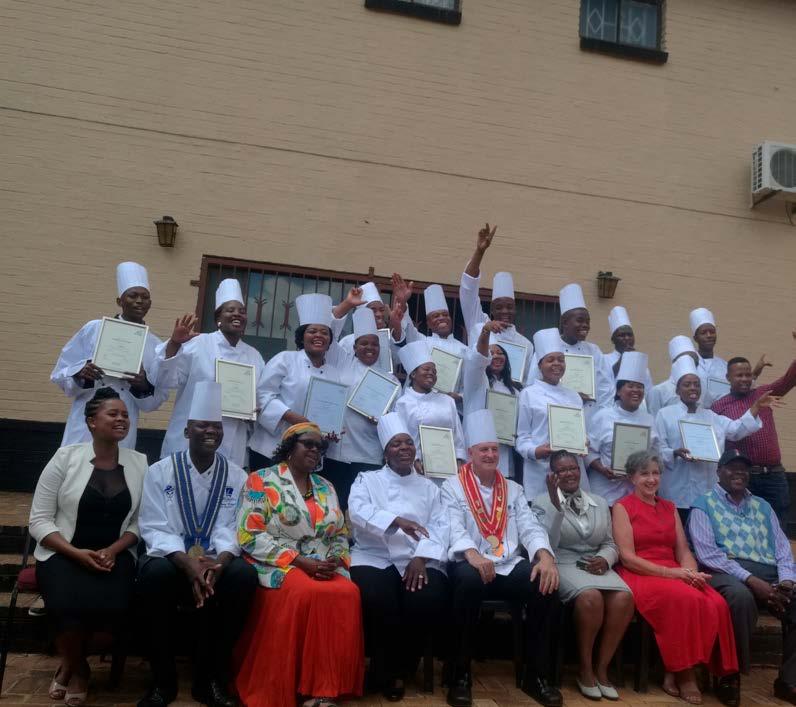SAFETY MATTERS
W O N K O T D E E N U O Y T A H GAS SAFETY: HERE’S W
T
he use of gas appliances has increased considerably in the past few years as it is a safe, reliable and convenient alternative when we can’t rely on an electricity supply. Gas is most often used for heating and cooking. The gas you use is standard LPG (liquefied petroleum gas) and is made of a mixture of propane and butane gases. Its simple chemical structure means that it’s clean-burning and very safe. LPG cannot burn without air and because the gas is stored in a cylinder, it’s easy to move around or take outside. What we don’t always consider when it comes to heating and cooking alternatives (such as gas) is safety, and how other energy sources pose a risk to our well-being. Education around energy safety not only helps you and your family, but assists the community as a whole. Although gas is safe to use if installed according to regulations, the most common types of hazards associated with the use of it include explosions and fire. There are a number of guidelines to take into consideration where the installation of gas is concerned. The following tips around installation and usage can be found in the South African National Standards (SANS) guide under gas usage and installation regulations: • Gas bottles may not be installed less than 1 metre sideways from doors and windows. • All copper pipes going through a wall must be sleeved. • Your gas installation must be accompanied by a certificate of conformity for gas appliances. • Gas equipment must be installed according to SABS requirements (SANS087). • Only gas bottles of less than 19 kg can be stored inside a building.
• When gas stoves are in use, ensure sufficient ventilation and do not open the gas flame too high, and ensure that the gas is turned off properly after use.
cupboard being used to house LPG cylinders. • The room containing the cupboard MUST NOT contain any electrical distribution boards.
Gas compliance
Outdoor installations
The law states that only qualified South African Qualification & Certification Committee (SAQCC) Gas registered installers are allowed to install or service any gas appliance. The law also requires all gas installations to have a valid certificate of compliance, much like an electrical or plumbing certificate. Insurance companies also insist on a valid certificate of compliance for gas installations when processing any claims.
One of the most important things to consider when planning an outdoor installation is the section of the SANS code referring to minimum distances. There are very strict requirements of minimum distances that are specified from your cylinder to certain features such as doors, windows and electrical points.
Most domestic gas installations can be divided into two categories: an external (outdoor) installation or an internal (indoor) installation. The regulations for cupboard (internal) installations are a little simpler, but each type has its own advantages and disadvantages.
Cupboard installations Probably the simplest form of gas installation, especially for kitchen appliances, is to put your gas cylinder inside a cupboard next to your appliance, usually a stove or hob. The regulations for these installations have a few requirements: • The cupboard used to contain the cylinder MUST be sealed off from all other cupboards around it. • The cupboard door must be vented at the top AND bottom to ensure free ventilation around the cylinder. • The cupboard MAY NOT be directly below your hob. • No electrical connections, plugs or switches are allowed inside the
According to the SANS code, gas cylinders must always be installed at minimum distances of: • At least 1 m away from any door or window that extends below the height of the cylinder valves; • At least 3 m away from any boundary wall that is not a firewall; • If the boundary wall is a firewall, the cylinders may be installed against the wall; • At least 2 m away from any inlet for an air conditioner; • At least 5 m away from any electrical source; and • At least 2 m away from any drain or manhole.
Useful contacts All gas installations are certified and monitored by the Liquified Petroleum Gas Safety Association of South Africa. For more information and advice, visit: www.lpgas.co.za. The South African Bureau of Standards (SABS): www.sabs.co.za www.spotongmag.co.za
53


























